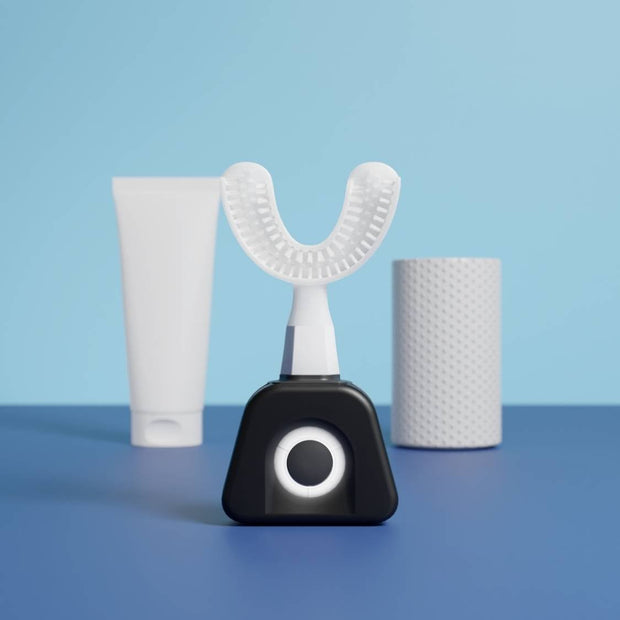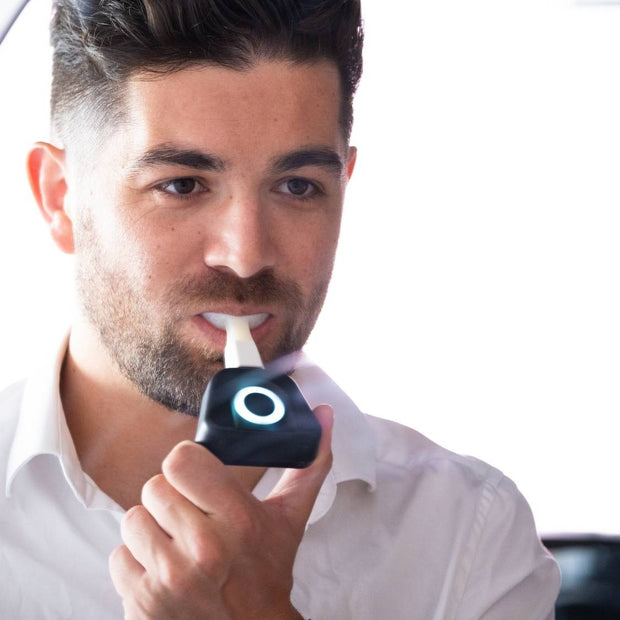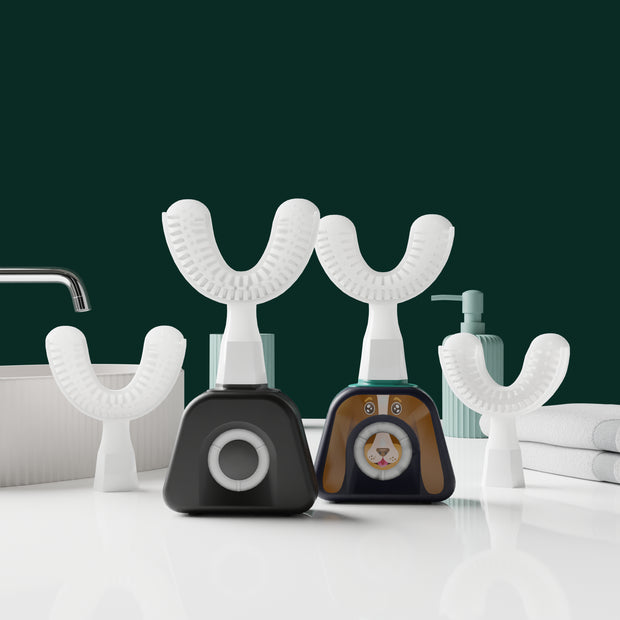Product Pricing












FREQUENTLY ASKED QUESTIONS
What is a sonic toothbrush?
A sonic toothbrush is a type of electric toothbrush that uses sonic technology to clean teeth. This technology is based on the use of high-frequency sound vibrations to agitate the fluid (water, saliva) in the mouth, helping to dislodge plaque, bacteria and food particles from teeth and gums. In concrete terms, a sonic toothbrush such as the Y-Brush or philipps sonicare emits vibrations at frequencies ranging from 24,000 to 48,000 strokes per minute, or even more, which is far superior to conventional electric toothbrushes. These rapid vibrations generate a flow of fluid that penetrates the interdental spaces, providing far better deep cleaning. The Y-Brush rechargeable battery toothbrush is made of 3500 nylon bristles, providing better brushing than silicone brushes. The long-lasting battery lasts for 4 months, so you can easily take your brush and cable with you when you travel. Sonic toothbrushes are renowned for their effectiveness in removing plaque, despite their higher price tag. They are also equipped with functions such as timers, pressure sensors and different brushing modes, allowing you to tailor care to your specific needs.
How do I clean my teeth with a sonic toothbrush?
Brushing your teeth with a sonic toothbrush is a simple and effective process that can greatly improve your oral hygiene. Here's a step-by-step guide to help: Apply toothpaste Apply a small amount of toothpaste to the head of the sonic toothbrush. Position the Brush: Place the toothbrush against your teeth at a 45-degree angle to the mouth line. Y-Brush's soft brush head adapts perfectly to your body shape. Switch on the Toothbrush : Switch on the sonic toothbrush and let it do the work. Sonic technology creates vibrations that dislodge plaque and food debris. Move slowly: Move the brush slowly from tooth to tooth, spending time on each surface (front, back, masticatory) of each tooth. Respect Brushing Time: Most sonic toothbrushes are equipped with a timer that will tell you when to change quadrants in the mouth and when brushing is complete. In general, we recommend brushing for two minutes. Brush Gums and Tongue : Brush gently along the gum line and don't forget to brush your tongue to remove bacteria and freshen your breath. Rinse : After brushing, rinse your mouth thoroughly with water. Also rinse the toothbrush head under running water. Use Dental Floss and Mouthwash: For optimal cleaning, complete your brushing routine with dental floss and a mouthwash adapted to your needs.
How does an ultrasonic toothbrush work?
An ultrasonic toothbrush uses advanced technology to clean teeth and gums using ultrasonic waves. Ultrasonic waves are sound vibrations that exceed the upper limit of human auditory perception. In an ultrasonic toothbrush, these vibrations are generated at extremely high frequencies, often in excess of 20,000 Hz or 2,400,000 movements per minute, to create a microscopic cleaning effect. When you use an ultrasonic toothbrush, the ultrasonic waves produced by the brush head agitate the fluid in your mouth, forming tiny bubbles. These bubbles involve a cavitational cleaning action, where the bubbles implode close to the tooth surface, dislodging plaque, bacteria and food debris from hard-to-reach areas, including interdental spaces and below the gum line. This cavitation effect is combined with the mechanical action of brushing to provide a thorough and complete cleaning. Ultrasonic toothbrushes are particularly effective in reducing plaque, fighting gingivitis and improving gum health. They are designed to offer a superior brushing experience in terms of comfort and efficiency, making daily care easier and more effective. Thanks to this cutting-edge technology, users can enjoy a deep cleaning that goes beyond what traditional toothbrushes can offer, helping to maintain a healthy mouth and radiant smile.
What are the advantages of a sonic toothbrush?
Sonic toothbrushes offer several advantages over
What's the difference with a rotary brush?
Electric toothbrushes can be divided into two main categories according to their mode of action: sonic and rotary (or oscillating). Here are the main differences between them: Cleaning mechanism : Sonic Toothbrushes: These use sonic vibrations to create a rapid movement of the brush bristles, usually in a back-and-forth motion. These vibrations not only clean tooth surfaces, but also produce a stream of micro-bubbles to help clean interdental spaces. Rotating Toothbrushes: These brushes work by rotating the bristles in small circles. Some rotary brushes combine rotation and oscillation (back-and-forth motion) for a more thorough clean. Cleaning efficiency : Sonic brushes are particularly effective for cleaning between teeth and along the gum line, thanks to their deep cleaning action and ability to disrupt plaque even beyond where the bristles physically touch. Rotary brushes are often considered highly effective in removing plaque and reducing gingivitis, particularly on tooth surfaces. Comfort of use: Sonic toothbrushes are generally gentler and can be more comfortable for people with sensitive teeth. Rotary toothbrushes can be a little more aggressive, which may not be suitable for those with sensitive teeth or gums. Brushing technique : With a sonic brush, a gentle sweeping motion is usually used, as the brush does most of the work. With a rotary brush, it's often recommended to place the brush on each tooth individually to allow the bristles to rotate and clean effectively. Price and availability: Sonic brushes can be more expensive than rotary brushes, but this varies according to brand and features. Rotary brushes are widely available and offer a varied price range. The choice between a sonic and a rotary toothbrush depends on personal preference, tooth and gum sensitivity, and your dentist's recommendations. Both types are effective in maintaining good oral hygiene when used correctly.



